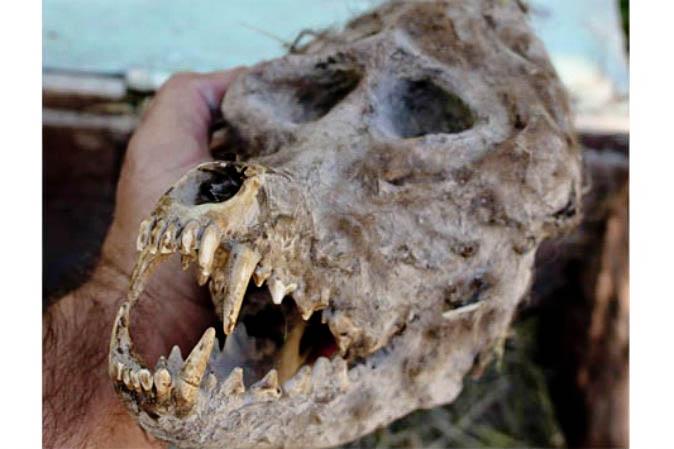A Bulgarian-born farmer, Trayche Draganov, claims to have found a box, chained shut, containing a werewolf-like skull while ploughing a new section of field in the village of Novo Selo, Republic of Macedonia.
The account was reported to Ancient Origins by historian Filip Ganev, who spent time in Novo Selo while conducting research for his book on the Balkan Wars. Mr Ganev met the farmer, who showed him the box containing the unusual skull. He reported that the skull appears wolf-like with the exception of an enlarged cranium, a trait found only in primate species.
Mr Ganev photographed the skull and shared them with government wildlife officials, who concluded that it was likely a wolf that suffered from Paget Disease, a condition which causes the skull to increase in size and appear more human-like.





